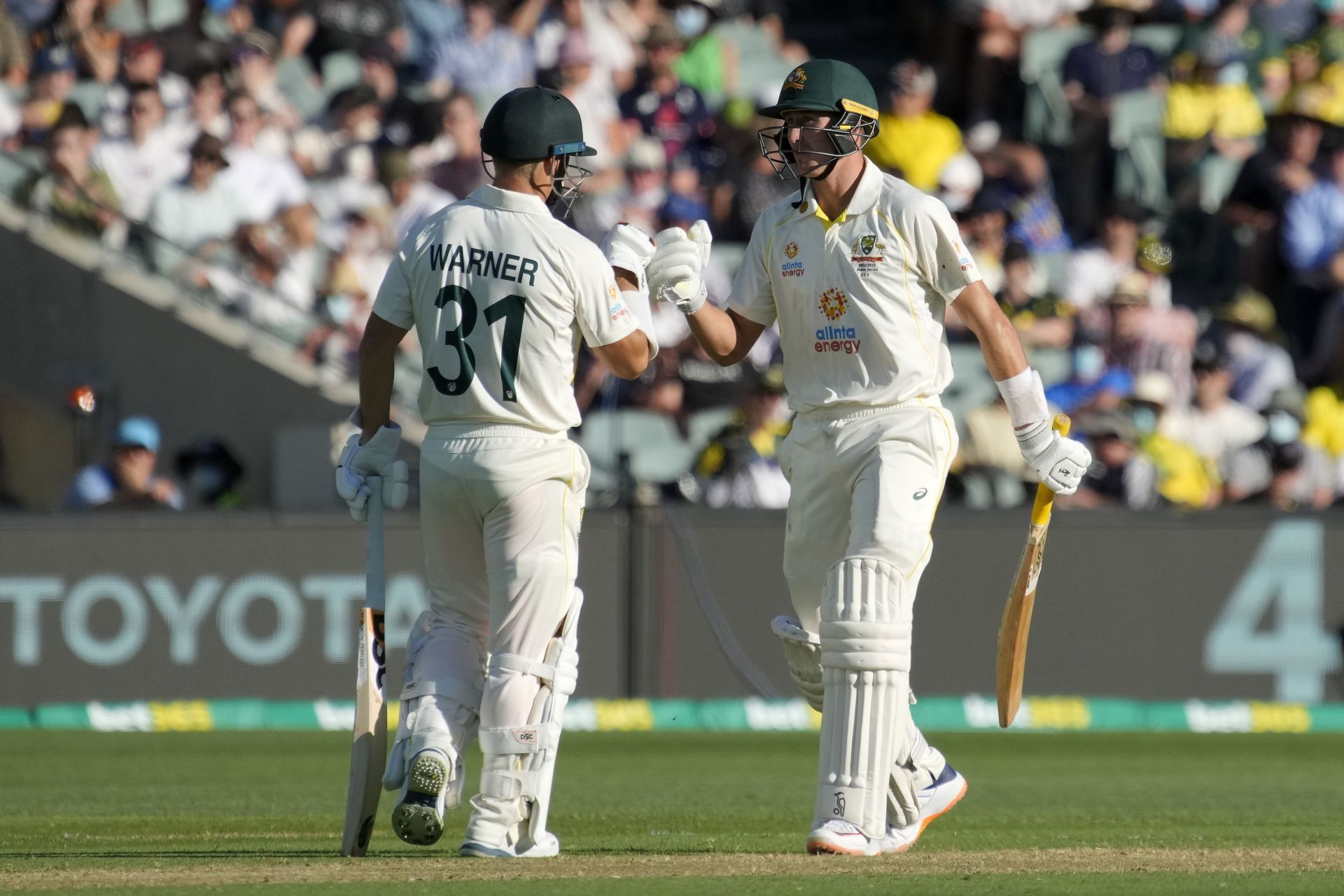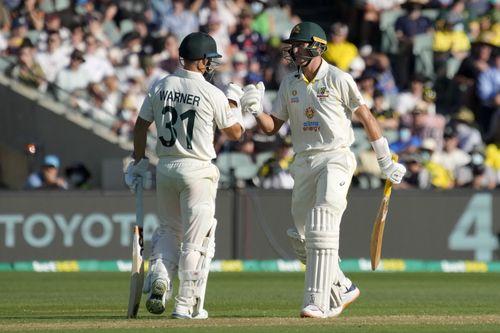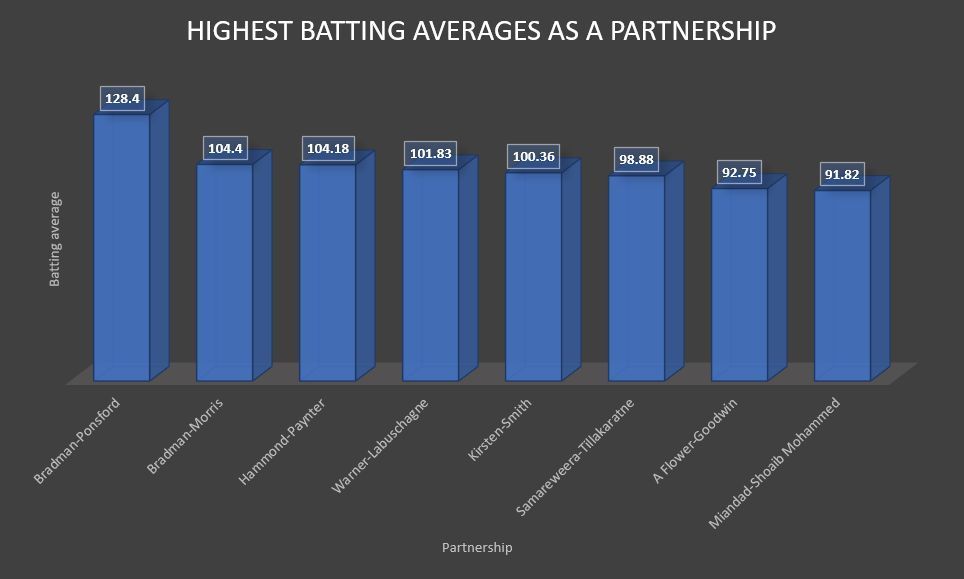
David Warner-Marnus Labuschagne: A batting pair for the ages

In November 2019, David Warner and Marnus Labuschagne arrived at Adelaide having endured contrasting fortunes in the recently-concluded Ashes series. While Warner couldn’t buy a run, Labuschagne was thrown in as a concussion replacement, got stung on the head but still found a way to score 353 runs in seven innings.
On paper, too, both represented relatively opposite ends of the spectrum. Warner has, over the years, allowed his bat to do the talking, with his effervescent stroke-play causing many teams headaches. Labuschagne, on the other hand, has developed a bit of a reputation of chattering away while batting and causing as much annoyance to bowling sides as humanly possible.
Warner also tends to not watch a lot of cricket when away from the game. Labuschagne, however, likes to take in whatever exists under the cricketing sun, meaning that he is never too far away from the sport.
Thus, when Labuschagne and Warner racked up a 361-run stand against Pakistan, many applauded the greatness of the partnership. Plenty also felt that it was a glorious aberration and that it wouldn’t be a pairing that would prove very successful in tandem.
A couple of years later, the duo reconvened at the Adelaide Oval – incidentally, in another pink-ball fixture. This time, they were up against England. The opposition didn’t matter, though, as they plundered another 100-plus run stand – a stand that took Australia from a perilous position to one of strength.
Labuschagne and Warner stitched together their sixth century stand
Throughout this partnership, there were instances when Labuschagne rode his luck. He played and missed numerous times and found run-scoring tough. In fact, even Warner struggled to rotate strike at the start of his essay. However, by the time they breached the 100-run barrier, normal service had resumed, with both complementing each other superbly.
war
Labuschagne and Warner have been very prolific throughout their association. As things stand, both have amassed 1222 runs as a partnership – across 12 innings and at a staggering average of 101.83.
Even when pitted against some of the greats of the game, this statistic stands out. For all partnerships to have batted a minimum of 10 times in Test cricket, Labuschagne and Warner’s average is the fourth-best – only behind Sir Donald Bradman-Bill Ponsford, Sir Donald Bradman-Arthur Morris and Wally Hammond-Eddie Paynter.
The fact that they are being mentioned in the same breath as Sir Donald Bradman and Wally Hammond is illustrative of how well Labuschagne and Warner have functioned together.

Apart from that, Labuschagne and Warner have also stitched together 6 century-plus stands. When talking about batters to have averaged more than 90 as a partnership, only Javed Miandad and Shoaib Mohammad have more (8).
When specifically speaking about top-drawer batting pairs in the 21st century, no duo can hold a candle to what Labuschagne and Warner have accomplished. Only Gary Kirsten and Graeme Smith have an average in excess of 100, with Hashan Tillakaratne and Thilan Samaraweera averaging a shade under 99 (98.88 to be exact).
Thus, a case could be made that the Labuschagne-Warner nexus is perhaps the greatest the cricketing community has ever seen. In the 21st century, they remain incomparable, considering what they have already achieved, despite not seeming a pair that was made in batting heaven.
Apart from that, Labuschagne and Warner are showing no signs of slowing down. While the latter has recently overcome a dry patch, the former has made records tumble whenever he has batted.
As things stand, Labuschagne has the second highest batting average for any batter to have scored more than 2000 runs in Test cricket – an average that is only bettered by Sir Donald Bradman.
Warner, meanwhile, has an exceptional record at home and averages more than 64, meaning that there will be several occasions when the pair can add another feather to their burgeoning cap.
Most importantly, though, both seem to have devised a method that makes the other tick, while also ensuring that they optimize their own resources. At times, Warner has been the aggressor, whereas on other occasions (like it happened at the Gabba a week ago), Labuschagne has taken up the mantle.
To an extent, this understanding has been telepathic and hasn’t allowed opposition bowlers to execute their plans against Labuschagne and Warner. And when that happens, Labuschagne and Warner are excellent at capitalizing.
Having said that, it would be absurd to suggest that this partnership can continue accumulating an average greater than 100. While there will be the odd dip, considering how cricket usually works, there isn’t a lot to hint that the deviation would be severe enough to dent a record that has already placed them among a pantheon of cricketing stalwarts.
Back in 2019, when Warner carved his way to a triple ton and Labuschagne manufactured a century, many rejoiced but also looked skeptically at what lay ahead. Not because such performances can rarely be replicated but also because the protagonists in this partnership seemed poles apart.
A couple of years later, Labuschagne and Warner still seem very different in terms of their personalities. Yet, when they have the bat in hand, they seem a pair that was always destined for greatness. And, of course, emblematic of a partnership for the ages.